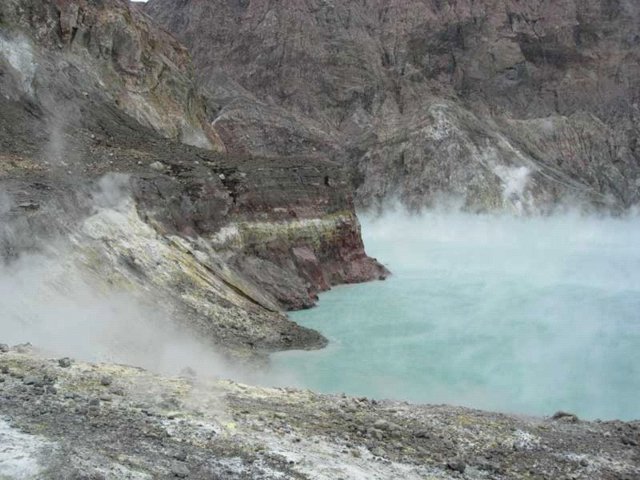Report on Whakaari/White Island (New Zealand) — May 2005
Bulletin of the Global Volcanism Network, vol. 30, no. 5 (May 2005)
Managing Editor: Richard Wunderman.
Whakaari/White Island (New Zealand) Seismic and hydrothermal activity remain low through June 2005
Please cite this report as:
Global Volcanism Program, 2005. Report on Whakaari/White Island (New Zealand) (Wunderman, R., ed.). Bulletin of the Global Volcanism Network, 30:5. Smithsonian Institution. https://doi.org/10.5479/si.GVP.BGVN200505-241040
Whakaari/White Island
New Zealand
37.52°S, 177.18°E; summit elev. 294 m
All times are local (unless otherwise noted)
White Island was last reported on in BGVN 29:03, covering the period to March 2004. At that time, approximately two years had passed since any significant eruption, but the New Zealand Institute of Geological and Nuclear Sciences (GNS) continues to monitor White Island. This report is a summary of their brief reports.
From April 2004 until June 2005, seismicity and hydrothermal activity at White Island remained at low levels, with some brief periods of weak to moderate volcanic tremor recorded during September to November of 2004. The level of the crater lake has risen significantly over this period, from 12-13 m below the overflow level in April 2004 to only 3-4 m below overflow level in June 2005 (figure 46). Some of this increase was caused by landslides in July 2004 and by heavy rains in May 2005. Steam and gas emissions have been minor, with the exception of a large plume visible from the mainland on 15 October 2004. The alert level remained at 1 (on a scale of 0-5), indicating some degree of unrest but no threat of eruption.
 |
Figure 46. The crater lake on White Island, taken 9 January 2005, when the lake level was about 5 m below the overflow level and rising. Courtesy of Franz Jeker. |
Geological Summary. The uninhabited Whakaari/White Island is the 2 x 2.4 km emergent summit of a 16 x 18 km submarine volcano in the Bay of Plenty about 50 km offshore of North Island. The island consists of two overlapping andesitic-to-dacitic stratovolcanoes. The SE side of the crater is open at sea level, with the recent activity centered about 1 km from the shore close to the rear crater wall. Volckner Rocks, sea stacks that are remnants of a lava dome, lie 5 km NW. Descriptions of volcanism since 1826 have included intermittent moderate phreatic, phreatomagmatic, and Strombolian eruptions; activity there also forms a prominent part of Maori legends. The formation of many new vents during the 19th and 20th centuries caused rapid changes in crater floor topography. Collapse of the crater wall in 1914 produced a debris avalanche that buried buildings and workers at a sulfur-mining project. Explosive activity in December 2019 took place while tourists were present, resulting in many fatalities. The official government name Whakaari/White Island is a combination of the full Maori name of Te Puia o Whakaari ("The Dramatic Volcano") and White Island (referencing the constant steam plume) given by Captain James Cook in 1769.
Information Contacts: Institute of Geological and Nuclear Sciences (GNS), Private Bag 2000, Wairakwi, New Zealand (URL: http://www.gns/cri.nz); GeoNet, a project sponsored by the New Zealand Government through these agencies:Earthquake Commission (E.C.), Geological and Nuclear Sciences (GNS), and Foundation for Research, Science and Technology (FAST). Geonet can be contacted at the above GNS address (URL: http://www.geonet.org.nz/contact.htm); Franz Jeker, Rigistrasse 10, 8173 Neerach, Switzerland.

